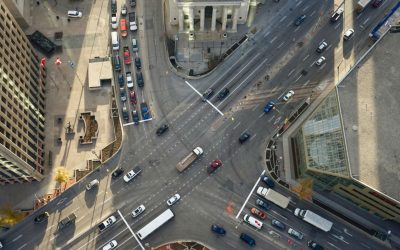You do not have to spend long in the company of a San Jose official before the old photographs come out. Chuck Reed, the mayor, has an aerial view of the city centre from the late 1970s on a wall in his office. Tom McEnery, who held the same post in the 1980s, has a bigger one showing several acres of empty lots. The point is to show how far the city has come in the past few decades. If downtown San Jose had really been transformed into the throbbing heart of Silicon Valley, though, it would not need old pictures to prove it.
Downtowns are an American invention, says Joel Kotkin, an expert on cities. London, Paris and Tokyo all lack a single centre where commerce, entertainment, shopping and political power are concentrated. Such cores did emerge in early 20th-century American cities thanks to steel-frame architecture, which made it possible to build high, and because they had central railway stations. Fifty years later, almost all were gutted by the internal-combustion engine, which enabled people and jobs to move to the suburbs. They have been trying to revive themselves ever since.
San Jose has attempted to create a commercial heart by selling city-owned land or even giving it away to developers. The city offers tax breaks and uses a portion of the property tax to pay for improvement projects. Since the late 1970s the redevelopment agency has shelled out $2 billion, almost two-thirds of it on downtown. It has built museums and theatres to lure people to the centre. Trams have been supplied to entice them out of their cars.
Such largesse has indisputably made the middle of San Jose more appealing than it used to be. By any measure other than an historical one, though, the campaign has been a failure. The office vacancy rate in downtown stands at 21%—higher than it was four years ago, during the dotcom slump, and almost twice as high as the Silicon Valley average. The theatres, which were supposed to lift downtown, now depend on the council to bail them out of trouble. In a city of 912,000 people, just 30,000 passengers ride trams each day. All this in a wealthy metropolis that has higher house prices than anywhere else in America, according to the National Association of Realtors.
Despite its anaemic condition, most visitors to San Jose at least know where downtown is. That is not the case in Las Vegas. The historical centre, with its string of small casinos and its neon cowboy, once seemed glitzy. It is now a shadow of the Las Vegas Strip, which has grown dementedly since the late 1980s, building ever larger, more exuberant hotels. Despite offering better odds than their competitors, the downtown casinos took in $630m last year, compared with $6.7 billion on the Strip. And they are the brightest spots in the area. Beside them lie cheap motels, shuttered shops and bail bondsmen.
Local boosters now hope that high-rise apartments will bring life and money downtown. Perhaps, but not soon. A wobbly property market has shaken out several projects. The scale of development at present—120 condominiums built, with another 2,748 under construction or taking reservations—is small stuff in a metropolitan area that added more than 70,000 residents a year in the 1990s, most of them in the suburbs.
The only reliable way to bring people downtown is to force them. Las Vegas has put federal, county and city courts a few blocks to the south of the original Glitter Gulch, together with a jail. As a result, local offices are filled with lawyers. San Jose’s council has moved downtown into a glass tower designed by Richard Meier. The building is striking, especially as it sits in a fundamentally low-rise area. A city official who needs spare parts for his car need walk only one block.
One of San Jose’s obvious problems is that it must compete against San Francisco, which lies 48 miles (77km) to the north. Yet the strongest competition is local. Suburban shops exert such a strong allure that it is hard to persuade retailers to open downtown. Both Las Vegas and San Jose have tried to jump-start redevelopment by building shopping malls in the urban core; both attempts failed utterly.
Not so long ago, downtown shops could at least claim to offer an urban alternative to the strip malls and boxy stores dotted about the suburbs. No longer. Santana Row in San Jose is a shopping street with distinctive, French-accented architecture, art galleries, shops and pavement cafés, with some apartments mixed in. It is exactly the kind of urban environment that the downtown boosters say they want, but for two details. Santana Row is three miles from the city centre, and was built in 2002. This fake downtown, with ample parking and no homeless people, is doing so well that similar schemes are mooted elsewhere.
“San Jose needs to be more than just a nice, suburban community,” says Mr Reed, the mayor. But perhaps it does not. An unconvincing downtown has not held down home-prices in San Jose, just as it has not arrested Las Vegas’s extraordinary growth. All it has done is give officials a sense of inferiority.


